Abstract
It is crucial to design innovative viticultural systems to respond to the current and future challenges facing winegrowing: to reduce the use of plant protection products, but also global warming, dieback, impact on biodiversity, etc… Viticultural systems were designed in very different contexts from today’s, and optimizing them technique by technique is beginning to reach its limits. Numerous levers are available to respond to these multiple challenges: biocontrol products, new technologies, varietal resistance, vineyard architecture, biological regulation, companion plants, crop combinations. All these levers need to be combined, which opens up numerous windows on a future in which winegrowing systems will undoubtedly be much more diversified than today.
Introduction
Viticulture in the 21st century faces numerous challenges that current viticultural systems were not designed to meet. In many cases, the methods of canopy management, pruning, soil maintenance, planting densities and the choice of grape varieties were determined on the basis of agronomic objectives (quality and quantity of harvest) at a time when the vine was confronted with few pests and diseases. Through successive health crises (powdery mildew, phylloxera and mildew in the 19th century), the vineyards adapted without major modification. The only case where this was not possible was the phylloxera crisis, which led to a major modification of the viticultural systems with the introduction of grafting throughout the vine population. This shows that changing the system can achieve lasting protection, at the cost of major upheavals for the sector. The appearance of plant protection products in the 19th century and throughout the 20th century made it possible to disconnect the protection of the vineyard from agronomic objectives. Today, for a variety of reasons, we are having to make do with fewer and fewer plant protection products, and perhaps one day will have to do without them altogether. And there are additional challenges. In response to all this, viticulture is being obliged to call its production systems into question. This is the whole point of the “system” approach. The initial experiments in this field are drawing to a close and have yielded results, but also new questions and the realization that in future trials we have to go much further than we have been able to do so far.
What must be the objectives of new systems that are designed today?
Over and above a reduction in the use of phytosanitary inputs, viticulture, like all crops today, is facing new demands. Work on system experimentation will have to take these new demands into account, and not be limited solely to reducing the use of plant protection products. These constraints may come from society and be imposed on production, as was the case for plant protection products. The main constraints concern the environmental impact of farming. The production of greenhouse gases has to be reduced by limiting the amount of energy used and storing carbon in the soil. The impact of farming practices on natural biodiversity is also strongly questioned today. Other subjects are also likely to appear on the public agenda in the near future, such as air pollution, whether from plant protection products (whereas current concerns are mainly about water and residues in food), particulates (linked to diesel engines), dust (linked to wind erosion of bare soil), etc. Although these subjects are not yet topical, it is essential to take them into account when trying to project what viticulture could be like in 25 years’ time. In addition, a number of issues have more to do with actual production, and it is of course important to take them into account when designing new systems. In a context of global warming, these new systems will have to be adjusted to the new conditions and be resilient to the possible emergence of new pests. The production potential of the vines must also be preserved, whether in terms of soil balance (conservation of organic matter, biodiversity, limitation of erosion phenomena…) or dieback phenomena (grapevine trunk diseases, Flavescence Dorée, virus diseases, etc.). Of course, it is illusory to believe we can design a system capable of taking all these issues equally into account, and prioritization is necessary at the design stage. On the other hand, it will be essential to assess the impact of the systems on all these points, at least at the design stage, and if possible once the system has been tested using real data. Here, methods such as Life Cycle Assessment are particularly useful.
What leverage do we have for going further in designing systems that make little use of plant protection products?
When designing a system, there are three levels of levers: efficiency, substitution and redesign. The first consists in doing better what is already being done (reducing the dosage of plant protection products, for example), the second in replacing one practice by another (plant cover instead of chemical weeding), and the third in radical, in-depth modification of the system (grafting vines on phylloxera-tolerant rootstocks). This classification takes into account an incremental modification of the system, the particularity of the “redesign” levers being that they impact the system at several levels and call into question the whole way a vineyard is tended. In order to design truly innovative systems, it is necessary to prioritize the redesign levers. Then, if possible, substitutions can take place, after which, lastly, efficiency levers can be mobilized to optimize the functioning of the system. There are various redesign levers.
The main ones are:
• New technologies
The prospects opened up by new technologies for agriculture are numerous. As regards the creation of new systems, when new technologies make it possible to imagine new ways of doing things they are a genuine source of progress. For example, technologies that allow much more frequent passes can open up design possibilities: robots can pass every week to do very light tillage, allowing weed control without disturbing the soil. Similarly, the use of fixed sprinklers to carry out treatments can make it possible to use biocontrol products with very low persistence by applying them every three days. Finally, disease detectors in the vineyard could make it possible to detect the first symptoms at an early stage, and to adapt the decision-making rules to the real situation in the vineyard. These are still far from being a reality, however.
• Varietal resistance / tolerance
This lever is undoubtedly one of the most promising for managing mildew and powdery mildew. Nevertheless, many questions remain unanswered: how can we ensure the durability of resistance? How can we manage diseases against which varieties are not resistant, but for which protection was provided by anti-mildew and/or anti-powdery mildew agents? And most importantly, will these varieties succeed in making their mark in a market where the grape variety is one of the main selling points?
• Choice of plant material
In addition to resistant varieties, the choice of grape variety, clone and rootstock can help to limit disease susceptibility and compensate for yield reductions linked to the establishment of plant cover.
• Vineyard architecture
The vine is a creeper, which gives it great flexibility of shape. Most modern vineyards are trellised, with the number of buds varying roughly from 10 to 25 per vine. However, other modes of canopy management can be envisaged. Minimal/semi-minimal management methods have been developed, rather for productive vineyards with low added value with a view to reducing costs, but they could be worthwhile in more limiting contexts.
• Biocontrol products
Many biocontrol products are now available for a number of pests. They are often presented as alternatives to conventional plant protection products, and as such fall rather into the “substitution” category. Nevertheless, for many products, application in combination with a half-dose of a crop protection product is probably not the best approach. The case of plant defence stimulators (PDS) is particularly emblematic. While products are beginning to arrive on the market, we still know very little about how they work. In particular, it is unclear whether they should be applied at the time of the pest attack, just before, or several weeks before, to give the plant time to react.
• Biological regulation
Biological control of pests by means of beneficial organisms is becoming widespread. While it is very effective for some pests (mites have not been a problem in viticulture since treatments for predatory mites went out of use), for others it requires a constant supply of new beneficial organisms on the plot. The ideal solution would be to acclimatise beneficial organisms to the vineyard plots or immediate surroundings so as to manage other pests and diseases. For example, green leafhopper populations can be regulated by parasitoids of the genus Anagrus. Similarly, powdery mildew could be reduced by the presence of hyperparasites of the genus Ampelomyces on the plot.
• Companion plants
Companion plants are plants grown to perform a function in the system, but which are not harvested. In viticulture, grass and green manure are the main companion plants used. However, other types of plant can be envisaged: relay plants that help maintain the companion plants on the plot, trap plants that attract pests, repellent plants… This domain is still largely unexplored in viticulture.
• Crop combination
When companion plants are harvested, we talk of crop combination. Besides the technical utility of the crop, it also provides an additional source of income for the winegrower. One can also imagine systems of collaboration between farmers, so that the winegrower does not have to learn how to manage an additional type of production, if this is worthwhile for the producer of the additional crop. For example, combined cropping projects for vines and thyme are being developed. All these levers open up interesting perspectives, but it is by combining them into a coherent whole that we design innovative systems. Several levers can contribute to the same objective, allowing partially effective levers to solve problems for which they would be insufficient individually.
What will future projects for the experimentation of winegrowing systems look like?
One of the main lessons of the early DEPHY EXPE projects is that the systems designed did not go as far as they could have gone, or rather that they were overtaken in some cases by producers. This is due to two factors: most of the trials were set up on existing vines to avoid wasting time on planting and entering production. Moreover, since a transfer to the winegrowers in the short or medium term was envisaged, a certain number of limiting technical factors (e.g. limited investment in equipment) or psychological factors (“Winegrowers will never do that! “) became apparent. With hindsight, it transpires that winegrowers are more adventurous than we could ever have thought, and that the transfer of results no longer takes place in the form of systems but in the form of design principles. For these reasons, it seems important to us today that at least some of the experimental sites should go as far as possible, and be designed from the planting stage. The important thing is to show that systems that dramatically reduce the use of plant protection products (to the point of not using them at all) are possible, even if this results in a change in the type of product.
Conclusions
The prospects for system design are many, and the systems to be experimented with even more numerous. They provide an idea of the potential diversity of viticultural systems in 20, 30 or 50 years’ time. Winegrowers have already shown that they were capable of adapting to radical changes in their production systems at the time of the phylloxera crisis. Today, we can anticipate these system changes so that they do not come about the painful way. However, these new systems raise more than solely technical questions: they may call into question the very manner of production, or the typicity of the products, and changes at the level of the viticultural sector itself are needed to allow these diverse systems to coexist.
What we have to remember
• Future cropping systems will have to respond to numerous challenges over and beyond a simple reduction in the use of plant protection products.
• The levers for achieving this are many and varied
• However, implementing them will bring about radical change in the viticultural systems, leading to modifications at the level of the plots, farms and even the sector as a whole.
- [Webinar] Solutions for alternative weed control #1 Electric weeding – Case studies in vineyard, grassland - 27 April 2023
- Mechanical weeding and required technical skills - 26 March 2023
- 10 questions and answers about plant cover in the vineyard - 25 March 2023
- What are the new avenues of research in system experimentation? - 23 March 2023
- What is clonal selection? - 23 March 2023
- Phthalates : Potential sources and control measures - 23 March 2023
- Rosé wines: impact of storage conditions in tank on the polyphenol composition and color - 29 March 2021
- Reducing alcohol content in wines by combining canopy management practices and biological techniques - 29 March 2021
- Enzymes in oenology : production, regulation, applications - 29 March 2021
- Herbicide-free strategies - 26 March 2021

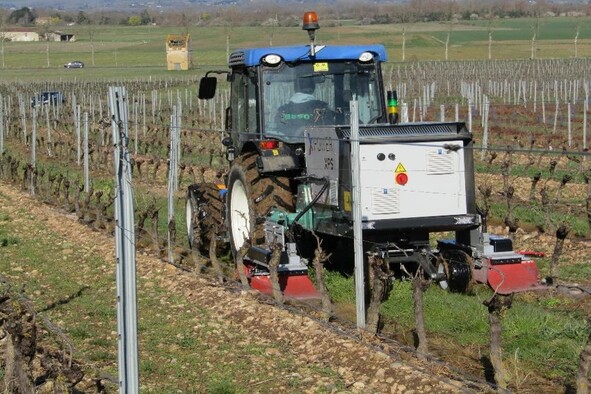
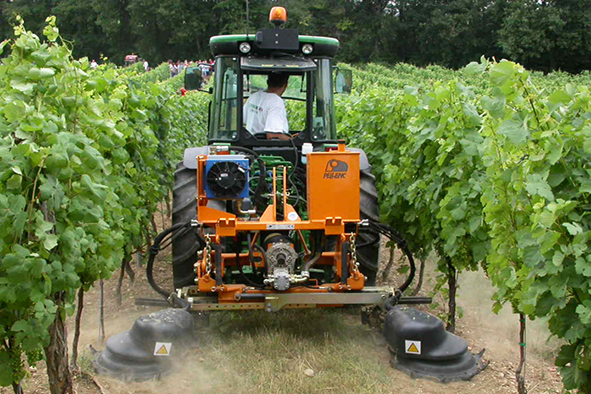
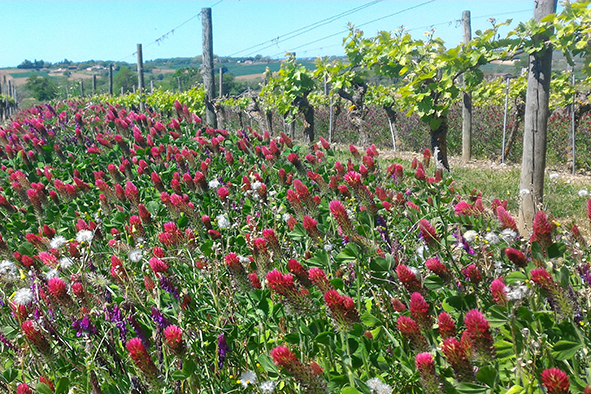
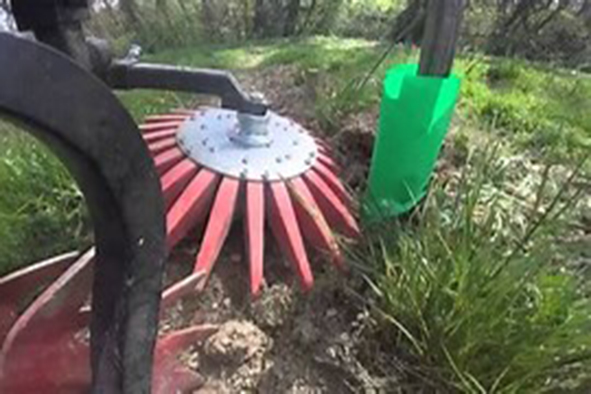
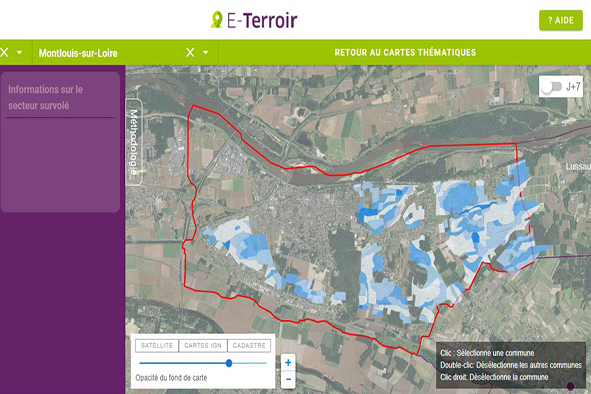
Réagir à l'article
Pour pouvoir laisser un commentaire, vous devez être inscrit sur notre site.
M'inscrireL'inscription est gratuite.
Déjà inscrit
Lost your password?